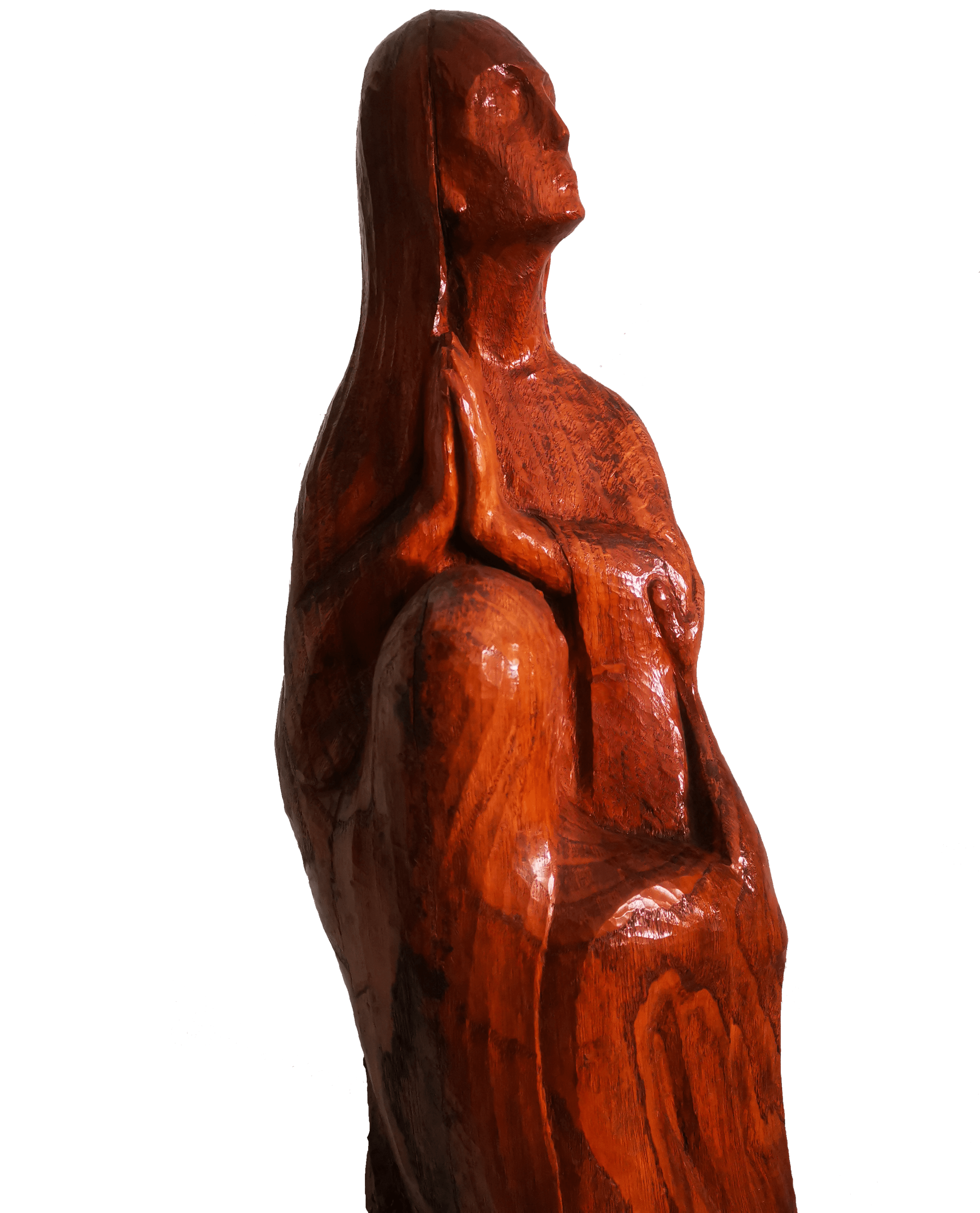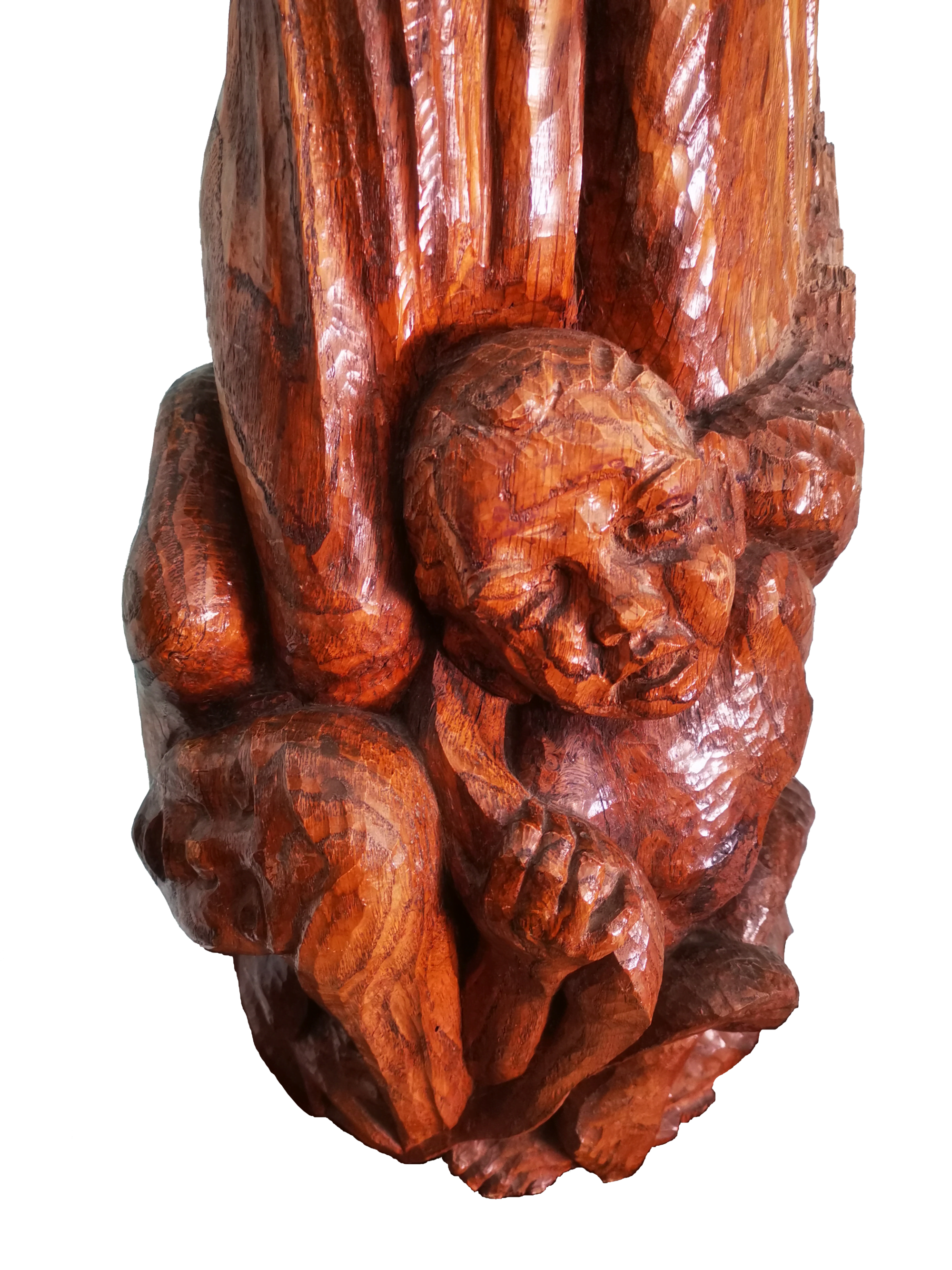Page 1 | Page 2 | Page 3 | Page 4 | Page 5 | Page 6 | Page 7 | Page 8 | Page 9 | Page 10 | Page 11 | Page 12 | Page 13 | Page 14 | Page 15 | Page 16 | Page 17 | Page 18 | Page 19 |
La Divina Commedia
(The Divine Comedy)
One of the main characteristic of Samuel Bugeja’s sculpture lay in the way two or more figures intertwine to create movement and drama. A fine example is the Divine Comedy, where there are four figures. In the lower stratum there are two condemned figures with their tragic and hellish grimace and contorted bodies physically in pain. Rising from these two figures we find a figure which clutches another one higher up and which symbolises a purgatorial soul. The top figure is a seraphic one, with head uplifted and hands clasped in prayer already enjoying the heavenly vision. What is remarkable is the way Bugeja exploited the shape of the wood to make every posture of the figures look as natural as possible, achieving in the process a powerful synthesis.
“The long toil involved to create such sculptures should be always accompanied by spontaneity” Samuel Bugeja. This emphasis on spontaneity he certainly drew from Antonio Sciortino, whom Bugeja held in extreme high esteem and with whom he felt an elective affinity. The Divine Comedy, sculptured in Oak in 1969 is considered as one of the Samuel’s masterpieces and has to be seen and studied to be truly appreciated.
"In the 'La Divina Commedia' the entwined figures of Dante and Beatrice soar upwards towards the Divine Spirit on the wings of Poetry". E.V. Borg, Art Critic.



